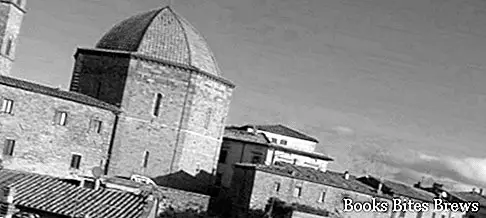What to see in Volterra in one day, attractions and places to visit in this ancient Tuscan town in the province of Pisa with ancient history.
Tourist information
The city of Volterra stands on top of the highest hill in the area, at 541 meters above sea level, in a privileged position surrounded by a territory that has favored human settlements since the Neolithic period.
The Etruscan civilization came to Velathri, the Etruscan name of Volterra, in the seventh century BC. and made it a great and flourishing center for the trade of metals, the production of wheat, timber and alabaster.
Volterra thus became one of the twelve lucomonie that constituted the Etruscan nation.
This civilization is due to the construction in the 5th, 4th century BC. of the first city wall, over seven kilometers long, of which important architectural elements remain today.
Many finds from this era can be admired in the Guarnacci Etruscan Museum.
Towards the middle of the third century BC Volterra recognized the supremacy of Rome and became part of the Italic confederation.
In the fifth century, when the first barbarian invasions began, Volterra was a bishopric. The bishop was the head of a diocese that followed the boundaries of the Roman municipium and Etruscan lucomonia, one of the most important ecclesiastical circumscriptions of the Tuscia Annonaria.
In the IX-X century the temporal power of the bishops began which became hereditary with the Pannocchieschi family, until the XIII century when it was supplanted by the municipal power.
What see
The construction of the Palazzo dei Priori, symbol of this power, dates back to this period, while the Duomo was built previously, on several occasions between the twelfth and thirteenth centuries.
In the XIII-XIV centuries, the noble families of Volterra, often fighting with each other, had many tower-houses built, real private fortresses.
Recommended readings- Artimino (Tuscany): what to see
- San Galgano (Tuscany): what to see
- Poggibonsi (Tuscany): what to see
- Castiglione di Garfagnana (Tuscany): what to see
- Tuscany: Sunday day trips
The still existing walls date back to this period, such as the southern part of the Fortress, the tower of the Duke of Athens, known as the Female. This was also the time of the struggles between Guelphs and Ghibellines.
The municipal power was engaged in hard battles against internal lords and against the cities of San Gimignano, Pisa, Siena and Florence, and it was to the latter that he ended up submissive by sharing their stories.
Volterra's latest revolt against Lorenzo il Magnifico's Florence will cost the city the loss of all autonomy.
To better control the city, the Florentines had the fortress enlarged, the Rocca Nuova (1472-1475), called the Mastio, was built, used largely as a prison. After the domination of the Medici, Volterra followed the fate of the Grand Duchy of Tuscany.
The historic center of Volterra is rich in monuments and art, evidence of the various civilizations that have followed one another.
Famous is the alabaster manufacturing, characteristic of Volterra since ancient times.
Around Volterra you can observe the spectacular landscape of the Balze, an erosive phenomenon active for some centuries that has produced a very high chasm that in the past has engulfed the city's Etruscan necropolises and several medieval buildings.
In addition, Volterra from the top of its hill dominates an exceptional territory, which offers suggestive itineraries of considerable landscape and historical interest.




